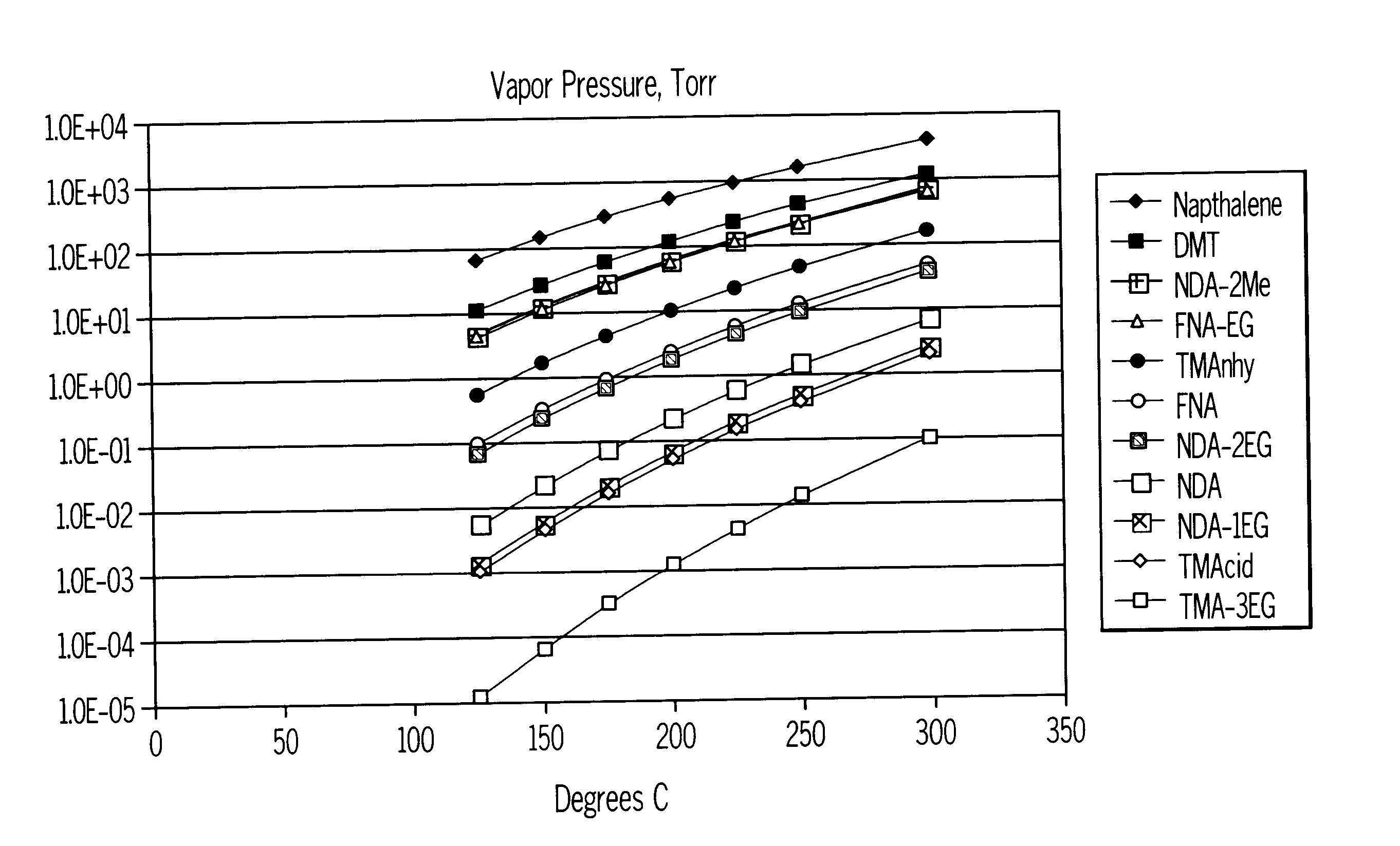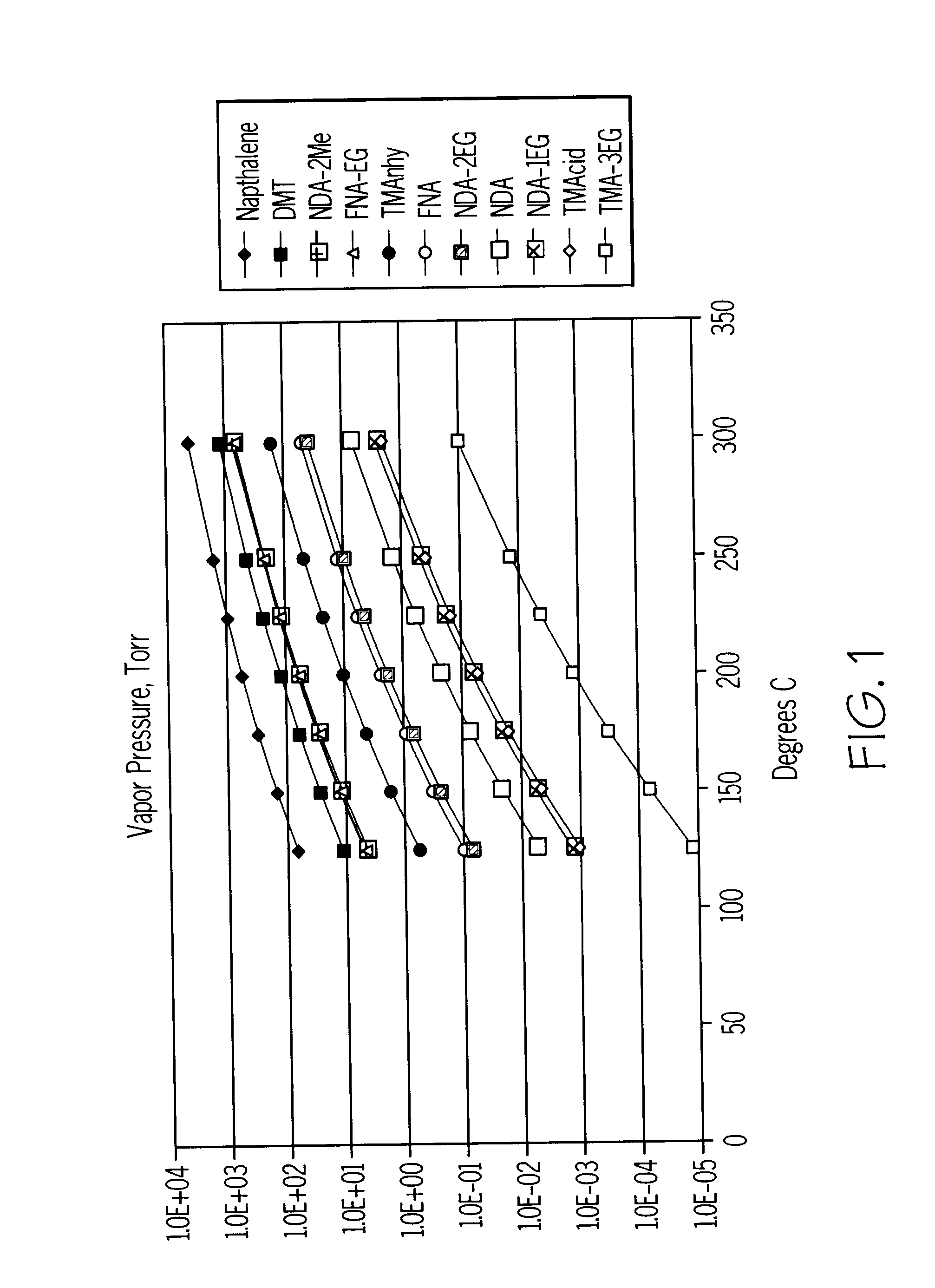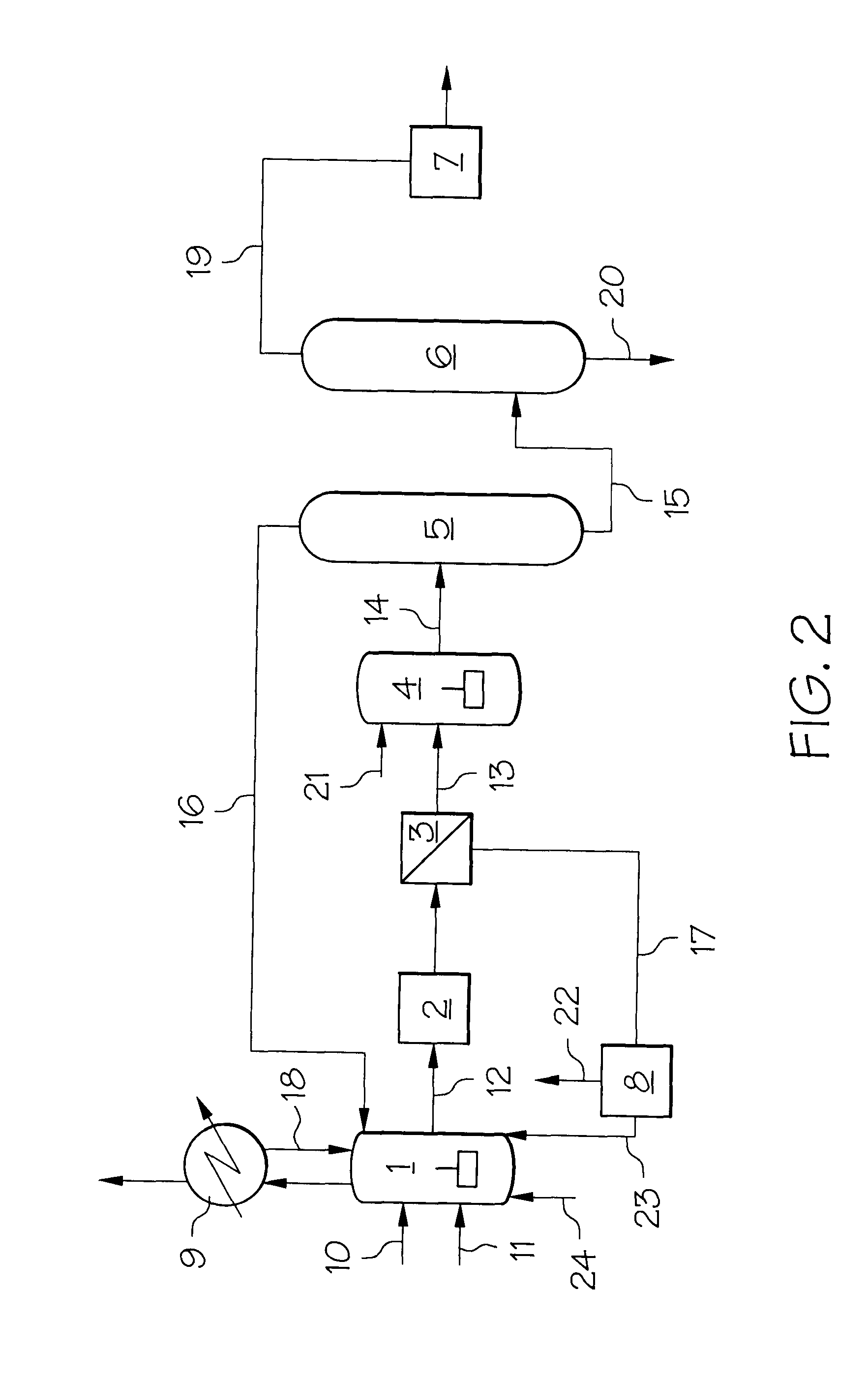Production, purification and polymerization of aromatic dicarboxylic acids
a technology of aromatic dicarboxylic acid and polymerization, which is applied in the separation/purification of carboxylic acid esters, carboxylic compound preparation, organic chemistry, etc., can solve the problems of reducing the transparency of molded products, reducing the melting point and strength of resulting polyester, and reducing the quality of molded products
- Summary
- Abstract
- Description
- Claims
- Application Information
AI Technical Summary
Benefits of technology
Problems solved by technology
Method used
Image
Examples
Embodiment Construction
For the sake of simplicity, the present invention will now be more particularly described with reference to the preparation of polyesters incorporating 2,6-naphthalenedicarboxylic acid residues prepared by oxidation of 2,6-dimethylnaphthalene. However, it is to be appreciated that the process described is equally applicable to the production of polyesters based on other aromatic carboxylic acids, such as PET.
One embodiment of the invention is shown in FIG. 2, wherein 2,6-dimethylnaphthalene (stream 10), air (stream 24), acetic acid (stream 23) and an oxidation promoter (stream 11) are fed to an oxidation reactor 1 where the 2,6-dimethylnaphthalene is oxidized in the presence of a transition metal catalyst to produce an effluent stream 12 containing crude 2,6-naphthalenedicarboxylic acid. The oxidation reaction is exothermic and the heat generated in reactor 1 is removed by heat exchanger 9 with condensed liquid recycled to the reactor 1 as stream 18. The effluent stream 12 from the ...
PUM
| Property | Measurement | Unit |
|---|---|---|
| temperature | aaaaa | aaaaa |
| temperature | aaaaa | aaaaa |
| temperature | aaaaa | aaaaa |
Abstract
Description
Claims
Application Information
 Login to View More
Login to View More - R&D
- Intellectual Property
- Life Sciences
- Materials
- Tech Scout
- Unparalleled Data Quality
- Higher Quality Content
- 60% Fewer Hallucinations
Browse by: Latest US Patents, China's latest patents, Technical Efficacy Thesaurus, Application Domain, Technology Topic, Popular Technical Reports.
© 2025 PatSnap. All rights reserved.Legal|Privacy policy|Modern Slavery Act Transparency Statement|Sitemap|About US| Contact US: help@patsnap.com



